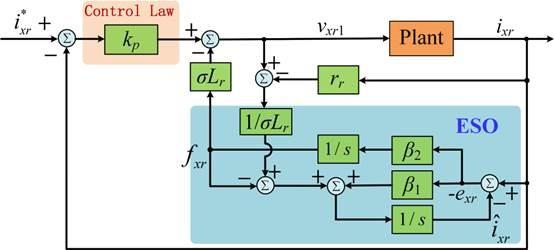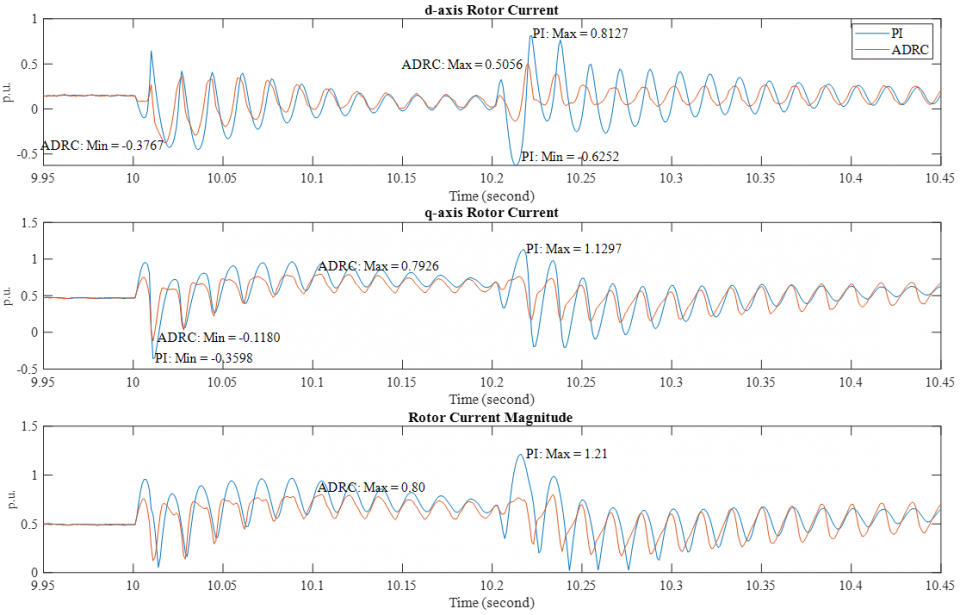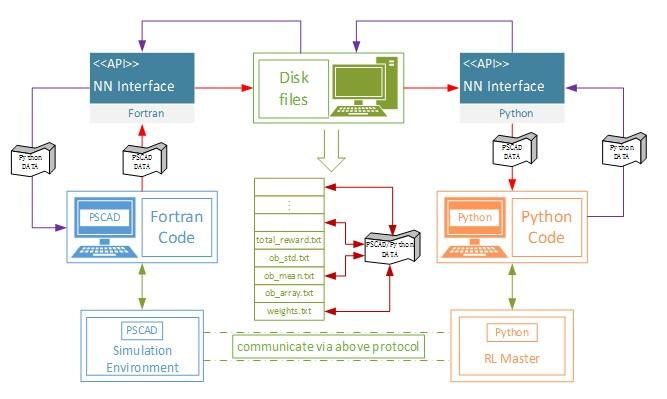Accomplishments
1) The team has developed the mathematical algorithm of a novel active disturbance rejection control (ADRC)-based robust controller to replace the existing current controllers used by the DFIG, which determines the fault ride through (FRT) performance of the wind turbine, as shown in Figure 2. The team has finished the implementation of the proposed ADRC-based robust current controller for the RSC of the dynamic Type 3 wind turbine to validate its effectiveness in improving the FRT performance.

In the validation test case, a three-phase short circuit was applied to the high-voltage-side bus of the Type 3 wind turbine and was cleared after 200 ms. As shown in Fig. 3, for the current waveforms around the fault occurrence period, the ADRC-based controllers significantly reduced the peak values of both the d-axis and q-axis rotor current components, which is critical to FRT of the RSC. Consequently, the peak rotor current magnitude was reduced from 1.21 p.u. when using the PI controllers to 0.80 p.u. when using the proposed ADRC-based controllers, showing a 34% reduction. Thus, the ADRC-based controller will help the DFIG wind turbine ride through this grid fault.

2) The team has implemented the reinforcement learning (RL) architecture to adaptively adjust the ADRC-based robust controller parameters of the wind turbine model. The DFIG system was simulated in PSCAD/EMTDC, and a communication framework shown in Fig. 4 was built to utilize the RL algorithm implemented in Python. The data between PSCAD and Python can be exchanged through this framework.
